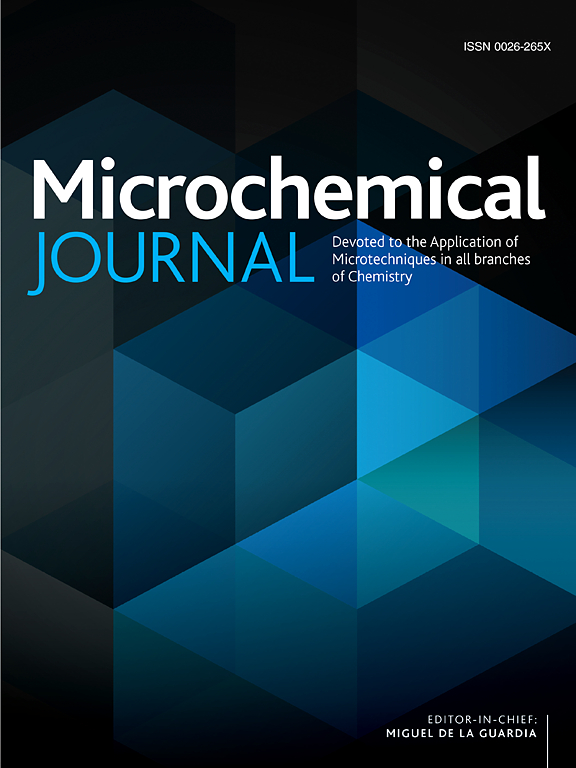Extraction of natural active ingredients from Eucommia ulmoides leaves by natural deep eutectic solvent-based surfactant-free microemulsion: Experimental and mechanism study
IF 4.9
2区 化学
Q1 CHEMISTRY, ANALYTICAL
引用次数: 0
Abstract
This study presented the development of a nanoscale, tunable surfactant-free microemulsion (SFME) formulated with natural deep eutectic solvents (NaDES) for the efficient extraction of phytochemicals. The NaDES-SFME, composed of octanol, thymol, ethanol and water, was characterized using a ternary phase diagram, conductivity measurements and UV absorption spectroscopy. The optimal NaDES-SFME composition (15 % v/v NADES, 45 % v/v ethanol and 40 % v/v water) demonstrated superior extraction performance compared to conventional solvents, achieving extraction yields of seven phytochemicals from Eucommia ulmoides leaves that were 1.15–3.55 times higher. FT-IR, dynamic light scattering (DLS) and fluorescence microscopy revealed a reverse W/O structure at 46.7 nm, mimicking cell membranes to penetrate plant matrices and dissolve compounds. Ultrasound-assisted extraction, optimized via response surface methodology, achieved a maximum total yield of 9.763 mg/g under the conditions of 50 °C, 41 min and a solid–liquid ratio of 31 mg/mL. The Pareto plot indicated that the extraction time was the main factor affecting the extraction efficiency and the secondary kinetic model could better fit the dissolution pattern of the phytochemicals. Density functional theory (DFT) analysis confirmed hydrogen bonding as the key mechanism for the high extraction yield. Finally, the combination of ethanol addition and rotary evaporation allowed for a high recovery of the phytochemicals, with a recovery rate of more than 96 %. This green, cost-effective and high-yield microemulsion holds promise for industrial-scale phytochemical extraction and utilization.

求助全文
约1分钟内获得全文
求助全文
来源期刊

Microchemical Journal
化学-分析化学
CiteScore
8.70
自引率
8.30%
发文量
1131
审稿时长
1.9 months
期刊介绍:
The Microchemical Journal is a peer reviewed journal devoted to all aspects and phases of analytical chemistry and chemical analysis. The Microchemical Journal publishes articles which are at the forefront of modern analytical chemistry and cover innovations in the techniques to the finest possible limits. This includes fundamental aspects, instrumentation, new developments, innovative and novel methods and applications including environmental and clinical field.
Traditional classical analytical methods such as spectrophotometry and titrimetry as well as established instrumentation methods such as flame and graphite furnace atomic absorption spectrometry, gas chromatography, and modified glassy or carbon electrode electrochemical methods will be considered, provided they show significant improvements and novelty compared to the established methods.
 求助内容:
求助内容: 应助结果提醒方式:
应助结果提醒方式:


